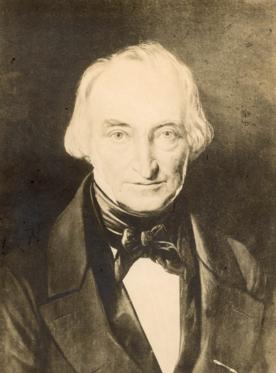William Christopher Zeise facts for kids
Quick facts for kids
William Christopher Zeise
|
|
|---|---|

|
|
| Born | 15 October 1789 Slagelse, Denmark
|
| Died | 12 November 1847 (aged 58) |
William Christopher Zeise was a Danish chemist who lived from 1789 to 1847. He is famous for creating one of the very first organometallic compounds. These are special chemicals that contain a bond between a metal and carbon. This compound is called Zeise's salt after him.
Zeise also did important work with chemicals containing sulfur. In 1823, he discovered a new group of these compounds called xanthates.
Contents
Early Life and Growing Interests
William Christopher Zeise was born on October 15, 1789, in Slagelse, Denmark. His father, Frederick Zeise, was an apothecary (like a pharmacist).
In 1805, William went to Copenhagen to train as a pharmacy assistant. But he wasn't happy there and soon returned home.
Discovering a Love for Science
Around this time, Zeise became very interested in science. He learned about new ideas in chemistry from scientists like Antoine Lavoisier. He read many books about chemistry and natural philosophy.
He even built his own simple battery, called a voltaic pile, to do experiments at home. When he was 17, he reorganized his father's pharmacy using new scientific rules.
Zeise wrote in his diary about a strong feeling that he wanted to do "scientific creative work," especially in chemistry. This made him want to go back to Copenhagen to study science, not just work in a pharmacy.
Becoming a Chemist
In 1806, Zeise moved in with the famous Danish physicist Hans Christian Ørsted. He helped Ørsted prepare for his university lectures. Living with Ørsted was very important for Zeise's learning. Ørsted encouraged him to study at the university.
Zeise became a student at the University of Copenhagen in 1809. He first thought about studying medicine, but chemistry remained his favorite subject.
Studying Abroad
The university in Copenhagen didn't have a special chemistry department or a good lab at that time. So, in 1818, Zeise got money to travel and study abroad.
He spent four months in Göttingen, Germany, working in Friedrich Stromeyer's lab. There, he became very skilled in analytical chemistry, which is about figuring out what chemicals are made of.
Next, Zeise spent almost a year in Paris, France. He met many famous French scientists. In Paris, he also met the important Swedish chemist Jöns Jacob Berzelius. Berzelius admired Zeise's work, and they became good friends.
Teaching and Discoveries
Zeise returned to Denmark in 1819. Even though he was probably the most scientifically trained chemist in the country, it was hard to get a job at the university.
However, he received public money to continue his scientific work. The university rented an apartment where Zeise set up a small lab. He taught chemistry to students there.
In 1822, Zeise was made an "extraordinary Professor of Chemistry." Later, when the Technical University of Denmark was founded in 1829, Zeise helped set up and expand its chemistry lab.
Discovering Xanthates
In 1823, while working in his small lab, Zeise found a new group of compounds that contained sulfur. He called them xanthates. The name comes from the Greek word "xanthus," meaning "yellow," because many of these compounds were yellow.
For this discovery, Zeise received a silver medal and became a member of the Royal Danish Academy of Sciences and Letters. In 1836, he was given a very high honor by the Danish king, becoming a Knight of the Order of the Dannebrog.
As a teacher, Zeise expected his students to be very careful and hardworking, just like he was.
Zeise was often sick during his life. He likely suffered from working with harmful chemicals in rooms that didn't have good air flow. He died from tuberculosis in Copenhagen on November 12, 1847. He was buried in Assistens Cemetery.
Important Scientific Discoveries

Zeise made several important scientific discoveries.
Sulfur Compounds
In 1832, he discovered mercaptans (also called thiols), and in 1833, he found thioethers. These discoveries helped support an important (but now outdated) idea in chemistry called "Radical Theory." Zeise's work on xanthates also led to these compounds being widely used in making other chemicals.
Zeise's Salt
In 1830, Zeise tried to mix platinum chloride with alcohol. This led him to create a series of platinum-based organometallic compounds. One of these compounds was later named Zeise's salt in his honor.
Zeise believed that this new salt contained ethylene, a type of gas. Another famous chemist, Justus von Liebig, didn't believe him and criticized his work. However, Zeise was right! The complex really does contain ethylene.
Scientists spent many years trying to figure out the exact structure of Zeise's salt. This research helped lead to big advances in organometallic chemistry. The full structure of Zeise's salt was finally understood much later, with the help of new technologies like X-ray crystallography in the 1950s.
Carotene Research
Shortly before he died, Zeise also worked on trying to clean the orange color, called carotene, from carrot juice. He found that carotene could dissolve in carbon disulfide and correctly identified it as a type of hydrocarbon (a compound made of hydrogen and carbon).

